Best Tips for using Air Dry Clay
INSIDE : Learn the best tips for using Air Dry Clay. There are endless techniques and tricks for creating beautiful crafts with Air Dry Clay. I have learned so much information after using this simple clay over the years! Plus I have tons of great kid and adult craft clay ideas, too.
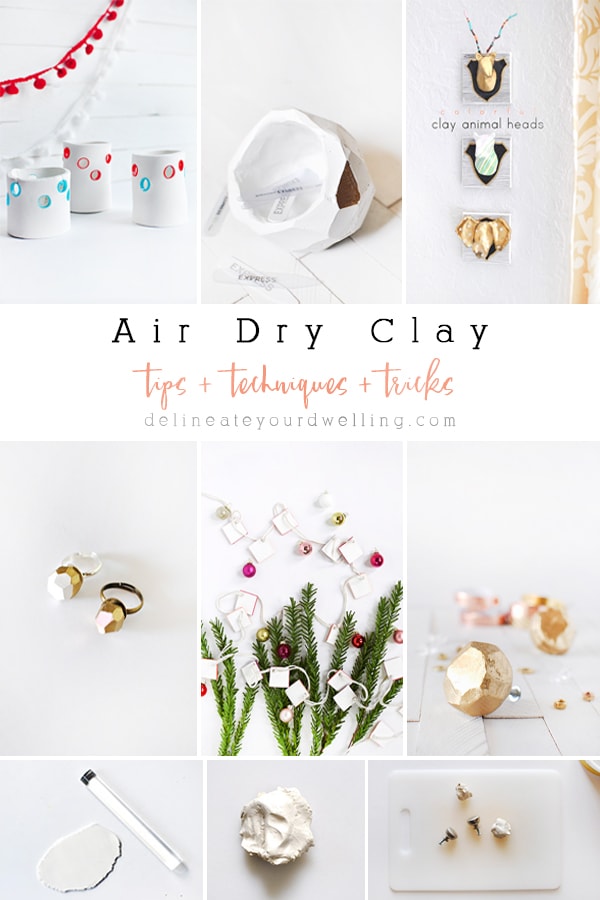
This post contains affiliate links. See my full disclosure.
This post has been updated since it’s original Feburary 2018 publish date.
Air Dry Clay is really an amazing product. Not only is it fun to use, but there are endless amazing ideas to create using it. I love that no matter you age, everyone loves crafting with clay!
Best part of Air Dry Clay
The best part about air dry clay is that it dries via the air – I know!
No longer do you need to spend time throwing pottery in a studio and having to wait days beyond that to then paint and then ‘fire’ your project in a kiln.
With air dry clay, your amazing creation is ready to use as soon as it is dries out!
Today I will be sharing my favorite Tips, Techniques and Tricks for How to use Air Dry Clay.
Over the years, I have created quite a few air dry clay projects and crafts. And each time I learn a little something new or figure out a neat new supply that helps make the crafting process go so much easier.
You might also enjoy these two VERY POPULAR posts I wrote.
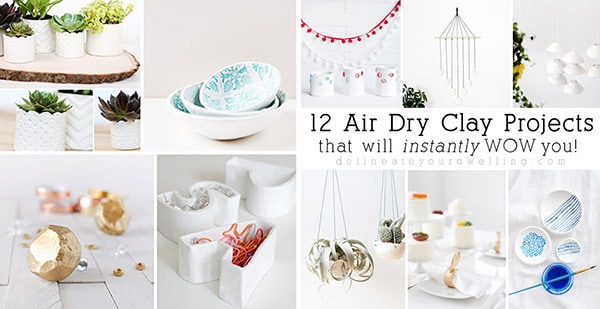
What is Air Dry Clay?
Air Dry Clay is a type of modeling clay that hardens without the need for baking or firing and instead dries in the air, into a hard solid form. It is made from a mixture of water, clay, and a hardening agent, such as plaster of paris or cellulose.
It is a versatile clay that can be used in many projects. You can use it to make clay sculptures, figurines, jewelry, decorative items, plaques or miscellaneous home decor items.
Air dry clay is available in a variety of colors as well, white and terra cotta being the most common.
There is no baking or firing needed and once it becomes dry, you can paint and decorate the clay. There is also very easy clean-up with this kind of clay.
How does Air Dry Clay work?
Air Dry Clay is a pliable soft clay product that you are able to roll, bend and mold into shapes, sculptures or enjoyable items. Once your clay piece has been created, simply allow the clay to sit out in the air. With time, the air dries out your clay and it becomes hard.
Here are the steps on how air dry clay works:
- The clay is made from a mixture of water, clay, and a hardening agent.
- The clay is kneaded to make it smooth and workable.
- The clay is shaped into the desired object.
- The clay is left to dry in a cool, dry place.
- As the clay dries, the water molecules evaporate and the hardening agent reacts to form a solid polymer.
- The clay is completely hardened after 24-72 hours.
What type of Air Dry Clay is the best to use?
- Sculpey Model Air Air Dry Modeling Clay
- DAS Air-Hardening Modeling Clay
- Jovi Air Dry Modeling Clay
- Staedtler FIMO Air Light Modeling Clay
- Best Air Dry Clay products
I used to exclusively use white Crayola Air Dry clay. I loved that it came in a 2.5 lbs container for such a reasonable price. I also loved that it came in a resealable tub and it stayed moist for quite a long time, even after opening it. You could easily pick it up at your local craft shop, but I found buying it on Amazon a little more convenient. I have made most of my older clay projects with the Crayola brand clay.
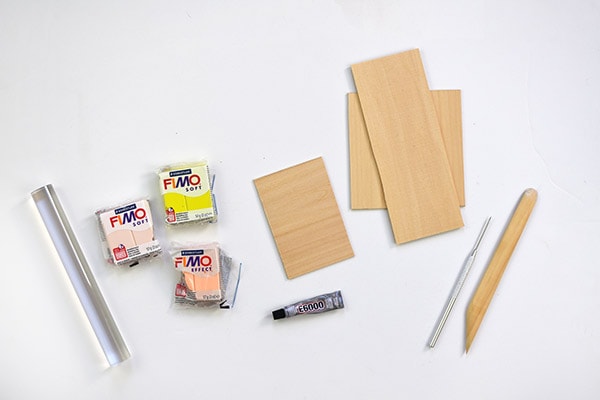
However, one day I tried Sculpey white Air Dry Modeling clay and I don’t think I’ll stray away from this brand. I think Sculpey is the best clay because it dries a little more clean and a purer white color, as opposed to the Crayola clay with dries a light gray/white color. I do keep it sealed in a large zip-lock bag to keep it from drying out, but overall it just seems like a higher quality product.
If you are wanting to make a clay project with your kids, the Crayola clay is a great choice. However, if you are wanting to make something for your home or a piece of clay jewelry, I would recommend the Sculpey brand.
How long does it take Air Dry Clay to dry?
It depends on how big and dense of an air dry clay project you have made for how long it takes to dry. Typically my smaller craft sized projects take around 24 hours to dry. However, if you are making something a little larger, it may take 48 hours.
Be sure to check on your clay projects as it dries and rotate it every few hours, so it can dry evenly on all sides.
Here are some factors that can affect the drying time of air dry clay:
- Thickness of the clay: The thicker the clay, the longer it will take to dry.
- Humidity of the air: The more humid the air, the longer it will take for the clay to dry.
- Temperature of the environment: The cooler the environment, the longer it will take for the clay to dry.
How to make Air Dry Clay stronger?
I have read a ton of information and from what I can tell if you are looking for a superior air dry clay that is strong and will hold up for intricate and ultra-fine detail work then ACTIVA La Doll Premier Airy Dry Clay is the best product for you.
It is pliable and easily worked for wonderful results. There are highly refined pumice, talc and special binders for a hard, satin smooth finish. Another perk of it, is it’s long open time and it can be worked indefinitely by keeping it moist.
Again I have not used this particular brand of clay, but it seems to be touted as the strongest Air Dry Modeling Clay available.
How do I make Air Dry Clay waterproof?
Air Dry Clay by nature breaks down when subjected to water, so it can be tricky to use your new clay project with much water. However, there are some things you can apply to give make your project more waterproof.
You can use Dishwasher Safe Waterproof Mod Podge to Seal your Air-Dry Clay but then your clay will not be waterproof and Mod Podge will yellow eventually if it is exposed to the sun regularly. If you are needing something to use outside, Outdoor Waterproof Mod Podge is a good option. Otherwise, you can use varnish, acrylic sealer or liquid epoxy resin to seal your Clay if you want it to be waterproof.
What are the BEST CLAY TOOLS to use?
Once you have your clay purchased, it is time to look into some of the other supplies and materials you can use for your air dry clay project. I have found this basic set of clay tools is appropriate for most air dry clay projects that I have done. And I like this clay tool set that comes with a zippered bag to hold them in.
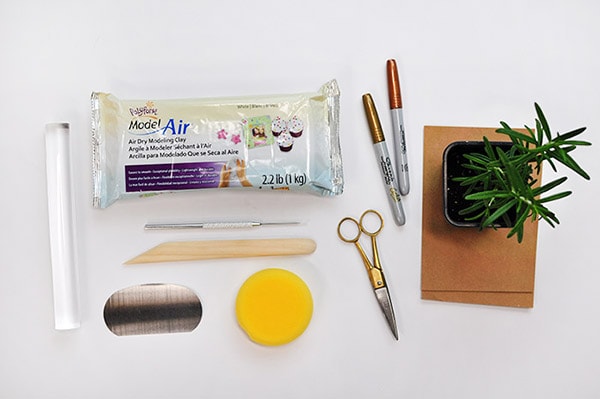
Occasionally I have needed to roll out the clay nice and smooth and have found this clear acrylic roller to work best.
How do I make MODELING CLAY PROJECTS, how to work with Air Dry Clay and other TECHNIQUES?
After all your supplies are purchased, you can finally begin making! A few clay technique tips include:
- Always work on top of a clean surface. You would be surprised how many times I am just about done with a project and then notice that there is something small stuck in my clay. I’ve tried working on a piece of wax paper before thinking it would help with clean up, not smart. A clean table is the best surface choice.
- It’s always smart to work with small amounts of air dry clay at a time to help prevent the clay from drying out too quickly. You can use a damp sponge to keep your hands and the clay moist as you work and add water to the clay if it starts to get too dry.
- There are numerous ways to store Air Dry Clay, but making sure to remove all air out of the containers helps a ton!
- Have a small jar of water nearby to help smooth out and patch cracks as the project starts to dry. I took ceramics classes in high school and this is called ‘slip’ (a clay + water mixture to repair cracks in your ceramics).
- Often time little cracks form while your clay is drying or overworking the clay, but there is no need to worry. I have 7 tips to keep your clay from cracking.
- You can always paint your clay after it dries! I like using the white clay best, but there are also many colored clays now available. To paint, simply allow the clay to dry and you can either use spray paint or acrylic paint.
- Do not be afraid to mix other materials into your air dry clay project. I have incorporated small twigs, live plants, cut up pieces of a plastic straw and jewelry items.
What can I make with Air Dry Clay?
The projects and crafts you can make with air dry clay are really endless! As creative as your imagination can take you, you can probably make it with air dry clay. Here are a few of the projects I have made with it.
Colorful Clay Animal Heads | DIY Clay Garland | Geometric Place card Holders | Clay Rings | Clay TDAY Banner | Colorful Clay Animal Heads | Geometric Clay Jar | Fourth of July Tea Light Holder
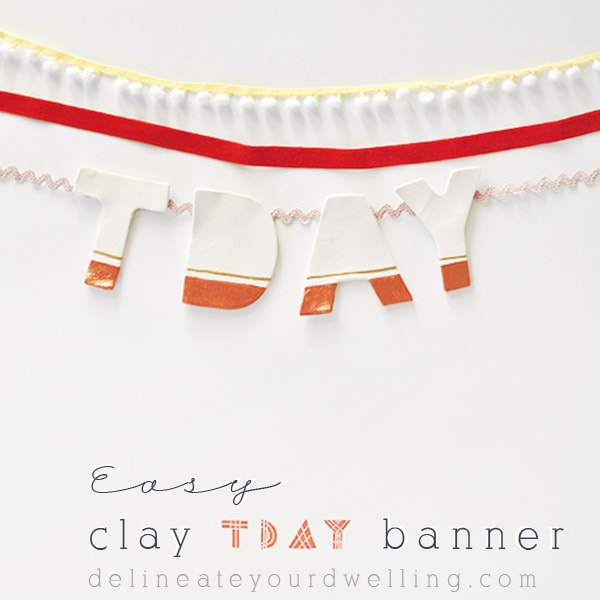
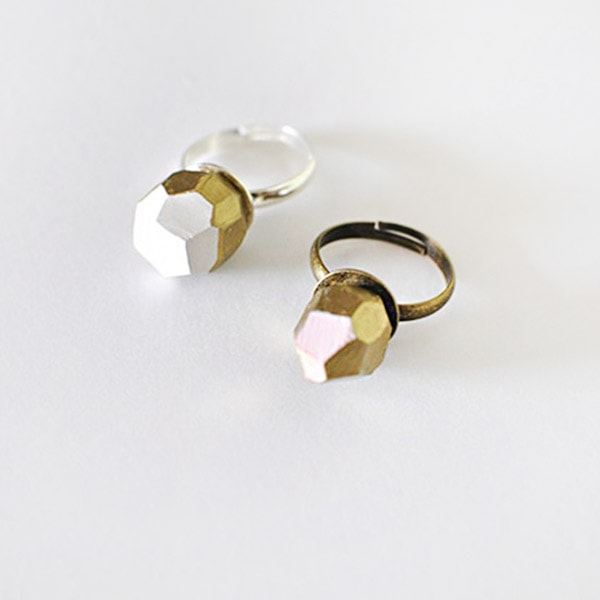
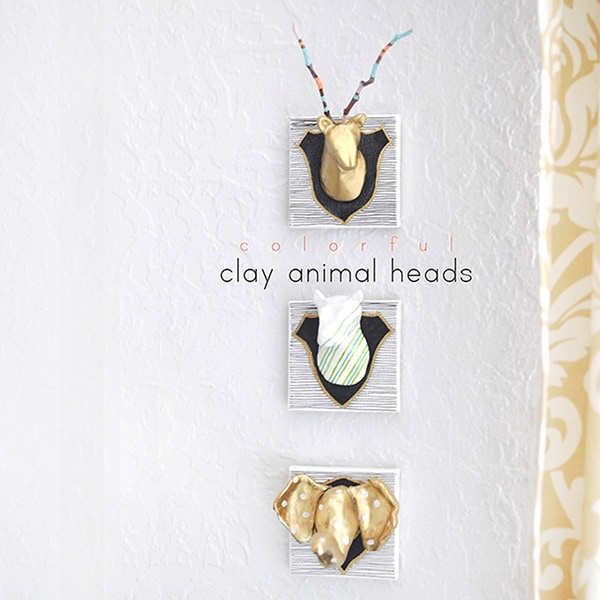
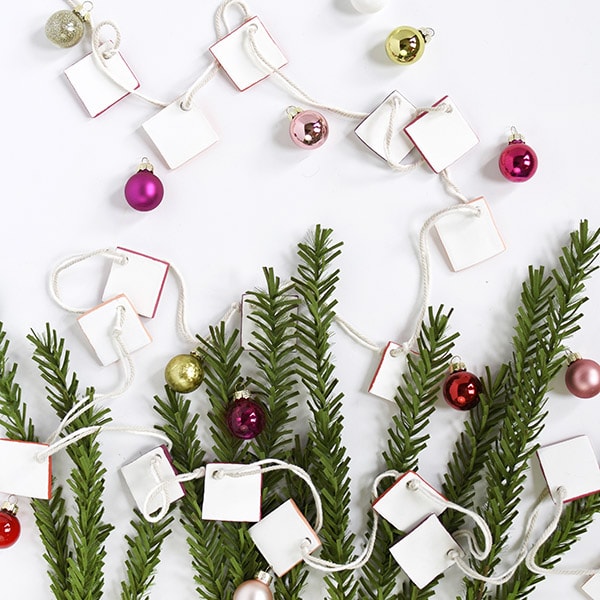
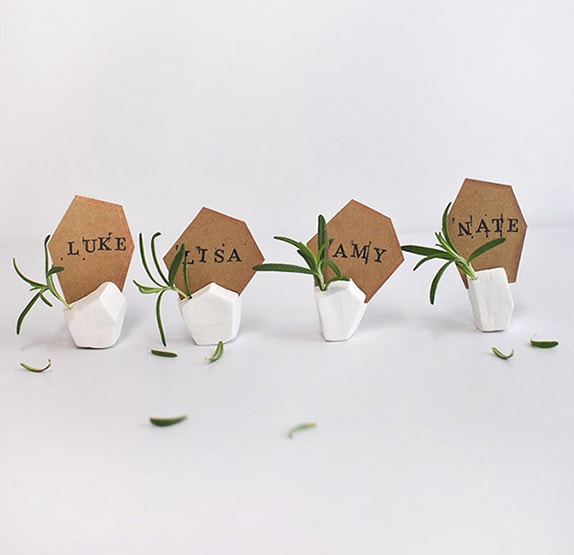

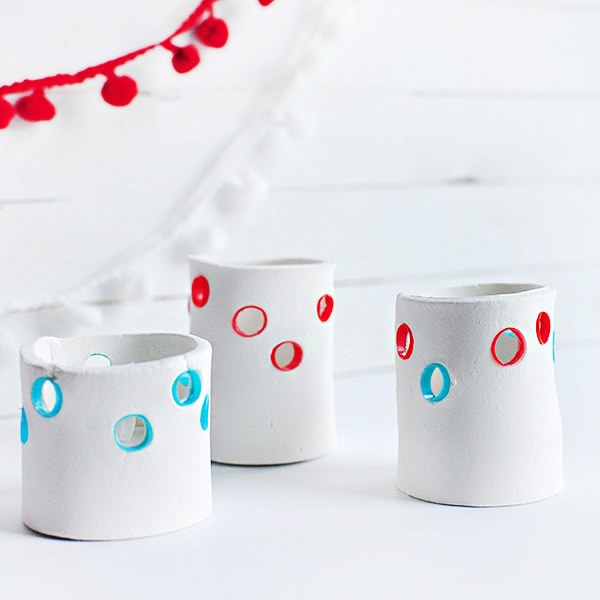
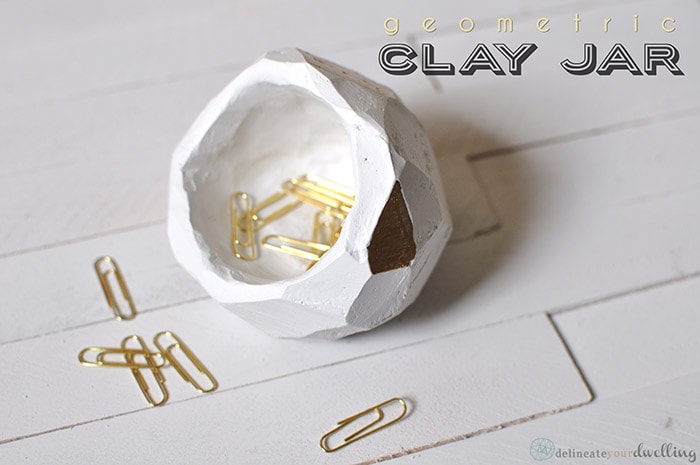
Looking for more about Air Dry Clay? You will like these, too.
– How to Store Air Dry Clay
– 7 Ways to keep Air Dry Clay from Cracking
– Best Air Dry Clay Products
– All my Creative Clay projects
– 35 Air Dry Clay projects that will instantly INSPIRE
– Air Dry Clay projects that will WOW
– 10 Amazing Clay Project Ideas
– Creative DIY Clay Bowl Ideas

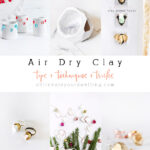

Have you tried working with Paper clay? Im wondering how comparable the results are, as from what I understand it is much lighter in weight and dries better.
Thanks, B
Oh, I’ve not tried paper clay. I didn’t even know there was such a thing. Now I’ll need to look into it. 😉
I bought amaco air dry clay…I can’t roll it out because it sticks to EVERYTHING! I’VE TRIED GLASS,plastic etc…. I’ve tried cornstarch, misting the surfaces…..I’ve tried everything and I can’t do anything with it!! Please HELP
It sounds like it’s almost too wet right now. I’d recommend letting it dry out juuuuuust a tiny bit and then I always use a cutting board underneath my air dry clay. Good luck!
Hi. I just found your blog and love how quickly you respond and explain things, especially to we newbies. Will alcohol ink work on air dry clay or is it best to stick with acrylics?
Alana, great question. I’ve never used Alcohol Inks on my air dry clay… but it sure seems like it would work!
I just started with air dry clay and I’m using it to make fairy houses. I’ve watched videos and read information on how to do it properly. When the projects are done what is the best product to use to coat them to keep them safe outdoors. From what I have gathered so far, varnish is the best thing to use. Is this true, or do you have a better recommendation. These houses are time consuming and I would hate to have them fall apart. And what is the best comparable consistency for working with air dry clay.
Nicole, thanks for your question. You can use varnish, acrylic sealer or a liquid epoxy resin to seal your clay if you want it to be waterproof.
I have been using Sculpey Model Air Dry clay for a few years to create my sculptures with. It was an all time favorite of mine to use and affordable too. Today I was reading online that the company changed their formula and now it isn’t the same quality as before. Have you tried Sculpey’s new formula of air dry clay? I was very disappointed to see that their clay quality has changed. Is the Crayola air dry clay pretty close to the quality of Model Air Clay? I might have to try the Crayola clay since Sculpey air dry isn’t the same anymore.
I’ve really loved the Sculpey air dry clay, although I can’t say that if it’s their new or older formula.
I use a silicone mat to roll out my air dry clay but it puckers up sticking to it when I use the roller. What is best to use to stop this please?
Love the blog 😀
Hi Carol. I have found using a cutting board works better sometimes. I’ve tried wax paper and the same thing happens to me. See if you have a smooth cutting board if that works better. 😉
On wow…I have never used the Crayola brand before- I always viewed it as “student” or “hobby” grade,.But that’s awesome that the clay is working well for you! I always liked the brand Das the best…any experience with it?
I used to use Crayola all the time, but now I really love using the Das brand! It’s a great one.
I am a newby here for sure!! I am trying to make some rolled out , then molded accent plates and small bowls. Having a drying problem , also cracking and breaking as they dry. Am I rolling them out to thin , and maybe the temperature in the room is too cold, as they dry?
Hi Kathy! I have a whole post all about cracking clay, it might be helpful for you to check out. I have made very thin air dry clay projects and didn’t have a problem with them cracking, however you have to keep an eye on them as they start to dry out and make little repairs. That might be helpful to you. Good luck!
I want to make a base to hold delicate piece of coral that’s about 14 inches tall. It has about a 3 inch diameter knob at the bottom. How should I prepare the base taking into account the height and weight of the coral and how it will be displayed (in a curio cabinet)? Are there any other concerns I should address?
Hello! I was wondering if using pre-made plates and cups and molding the clay around them: would the clay be able to come off of the dishes or would it stick once dry?
That is a great question. I believe you would probably be able to gently pry the dry clay off of your plates and cups. However, just an FYI – air dry clay is only hard because the moisture has dried out of it. If you are using this type of clay for plates and cups to hold wet or liquid, it will soak in and eventually turn the clay back into soft… clay.
Hi, I love your blog. I’ve learned a lot. I do have a question about the long term stability of air dry clay. I’m designing a diorama and I’m trying to figure out how I’m going to set up my base that it will set on, which will be wood. I’ve read that air dry clay will shrink over time is this correct? I’m planning on having buildings and props as a well as using it to make hills, and I would hate to see this shrink in a few years and look different. Is this a concern?
Also I am planning on using a resin to get a pond look, what should I look for in a sealer if I’m going to pour some on clay or do I not need one? Thanks.
My air dry clay projects have turned as hard as a rock, so maybe it depends on the type of clay you use? I would recommend the kinds I’ve included in my posts – as I think they would hold up well for years to come.
Good question on the sealer… I’m not quite sure to be honest, as I have never used resin on mine. Sorry.
Hi! I am working with classes that will likely need 2-3 classes to complete the project. How do I keep clay from drying and still being workable between days?
Great question… you could put the projects in airtight containers or ziplock baggies if they are small.
Can this type of clay be used to make plant pots, such as small succulent pots? Would water in them cause any problems?
Great question! If you want to make a pot, I’d recommend making the clay pot a little bigger and using the container the plant came in to really hold the plant. The air dry clay pot can be the outer “fancy” pot. Since this type of clay is not being baked, sitting water will eventually soften the clay.
hi! what should i seal the clay with after i paint it to prevent the paint from washing out?
Great question. When I have painted my clay, I haven’t ever used a sealer because I’m not washing it… and it’s never been an issue. Even just a clear spray sealant would probably work well, though.